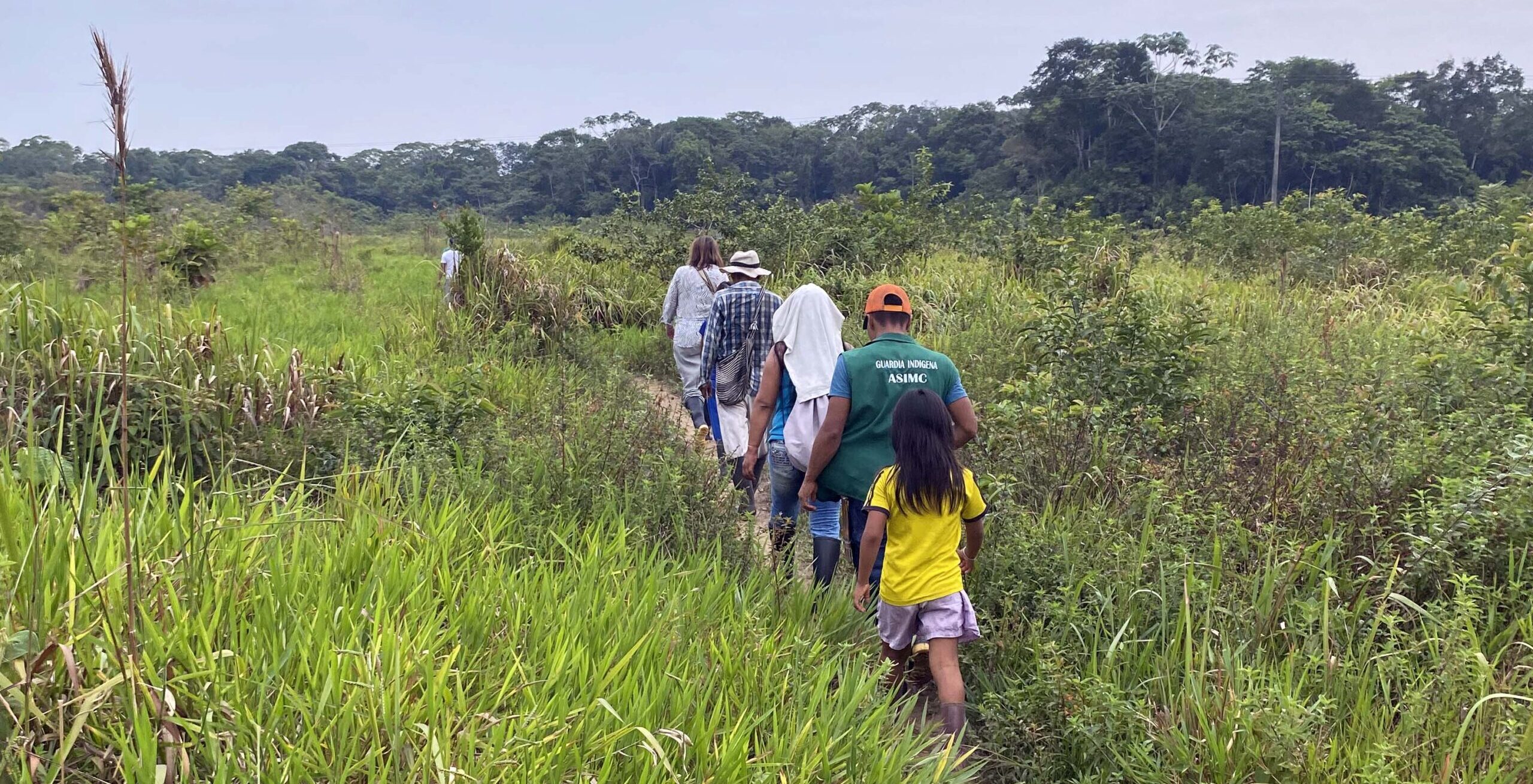Tropenbos Colombia Establishes Centre for Intercultural Tree Seed Management
Earlier this year, Tropenbos Colombia, together with forestry professors from Universidad Distrital and the Puerto Naranjo Indigenous Resguardo, laid the groundwork for the development of an intercultural and biodiverse seed bank.
The initiative, rooted in knowledge exchange on forest restoration and seed use, seeks to honour local leadership and traditional wisdom. The new seed bank, named the House for Intercultural Tree Seed Management, will serve as a hub for research, seed care, and student learning, with full community and elder participation.
Read the full report below kindly prepared by Mabel Martínez, Maria Clara van der Hammen and Catalina Vargas.


In February, Tropenbos Colombia’s team and teachers of Forestry Engineering from the Universidad Distrital Francisco José de Caldas visited the Puerto Naranjo Indigenous Resguardo to establish the basic agreements for the creation of a biodiverse and intercultural seed bank. It was meeting focused on exchanging knowledge about restoration and seeds with the participation of different members of the community, including the local coordinator of the process Didier Pisarro and the traditional elders and leaders of the Resguardo.
The visit highlighted the extensive experience that Puerto Naranjo already has in forest restoration processes. As established in its own management plan, the community has been promoting forest recovery initiatives for more than ten years. There is a commitment among locals to strengthening the knowledge related to restoration and benefiting from the cultural and economic advantages of having a biodiverse territory. Women in particular are very interested in the income possibilities of providing seeds to restoration processes in all the Amazon region.
On this occasion, we visited many areas of the territory, after requesting the permits required by traditional authorities. The first area we visited was the restoration plot surrounding one of the springs in the Resguardo, more precisely the water source used by the self-managed community aqueduct recently established. The locals told us that seven decades ago, when they settled in this land, they found evidence of past settlements in this precise area, as there were remains of clay pots and flutes. More recently, it had become pasture for cattle ranching; and now, we witnessed how many planted seeds —including canangucha and asaí palms, ideal for areas near water sources — are successfully growing.
The second restoration visited was in an area of vendeagujales, a grass that grows in deforested areas and behaves as an invasive species with the peculiarity that it is difficult to restore because fire strengthens it. In this area, we observed how fire management continues to be a challenge for the restoration processes. Finally, the third restoration we visited was a fenced plot further inside the Resguardo where a chagra, the biodiverse indigenous cultivation system, is being planted. In the long term, if the traditional agricultural knowledge is properly applied —a knowledge that is mainly female— the forest will be recovered.
Among the many agreements, all the participants decided to name the new seed bank as a house for intercultural seed management underlining that it will be a space for seed care, research and dialogue, as well as accommodation for the university students. Another agreement was that elders, both men and women, would be part of the research team working as guides and accompanying the development of the proposal. In addition, the creation of a local indigenous research team was consolidated. Last of all, there will be a visit of some members of the community to a well-known nursery of dry forest tree species soon.
The creation of intercultural biodiverse seed banks is an initiative of Tropenbos Colombia, the Resguardo Puerto Naranjo and the Universidad Distrital Francisco José de Caldas with the support of the Global Centre on Biodiversity for Climate.


